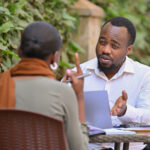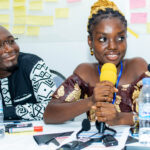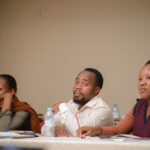This article was published more than 8 years ago.
Fund grantee UDEFEGUA works every day to protect human rights defenders in Guatemala – an increasingly difficult feat as violence against activists escalates. In this blog, UDEFEGUA founder Claudia Virginia Samayoa reacts to UN Special Rapporteur Michel Forst’s report on the situation of human rights defenders, offering an on-the-ground perspective.
On October 21, 2016, Michel Forst, the United Nations Special Rapporteur on the Situation of Human Rights Defenders, released a powerful report concerning the dire plight of environmental human rights defenders. It is no longer possible to hide this grave situation through impunity and silence as governments around the world, particularly in Latin America and Asia, have tried to do.
The power of Mr. Michel Forst’s report is its clarity; it indicates definitively that if this trend of violence continues, the objectives of the 2030 Agenda for Sustainable Development will not be achieved. He argues, “Our future and these goals are doomed to failure if those individuals and groups on the front line of defending sustainable development are not protected at the national, regional and international levels.”
As they say in my hometown, “The rooster doesn’t crow any clearer than this.” The grave situation faced by environmentalists and communities who defend their territory against possible irreparable damage from development projects threatens everyone’s future. The connection between defenders of human rights and the future of humanity is clear.
The report also clearly identifies major obstacles to protecting defenders, such as the structure of power relations that exists at the global level. Despite the statements of the General Assembly and the UN Guiding Principles on Business and Human Rights, both private companies and state governments continue their assault on environmental human rights defenders. Recognizing this is critical to solving the issue. The report demonstrates this, beginning with the names of defenders who have been killed in recent months after facing long campaigns of criminalization and threats (by corporations and governments).
I appreciate that the report reflects the frustration and anger felt within the community seeking to defend human rights activists, as well as the cynicism and impunity that characterizes the actions of those in power. Thus, the first name mentioned is that of Berta Caceres, a Honduran defender, who despite urgent alerts, international recognition of her work, and protective measures, was murdered this past March. The report also pays homage to Maxima Chaupe, a Peruvian human rights defender, who was assaulted with her husband at home and left seriously injured after receiving an award. This attack occurred within the context of a smear campaign within her own community and the Peruvian human rights community.
Mr. Forst refuses to remain silent, urging states to take action to protect defenders of the environment and to stop stigmatizing them as ‘problematic’ and ‘enemies of development.’ Only decisive action by state governments can halt this spiral of violence that primarily affects Honduras, Guatemala, Peru, Colombia, Brazil and Mexico. These six Latin American countries are among the ten most dangerous places to be an advocate and defender of the environment despite the fact that all have, or claim to have, policies to protect defenders of human rights.
As expected, the report has offended these countries with its candor. However, it tells the truth and, as such, should serve as a call for civil society and the individuals and the organizations who defend other human rights to stand in solidarity with environmental defenders and support their struggles in a demonstration of integrity and interdependence.


